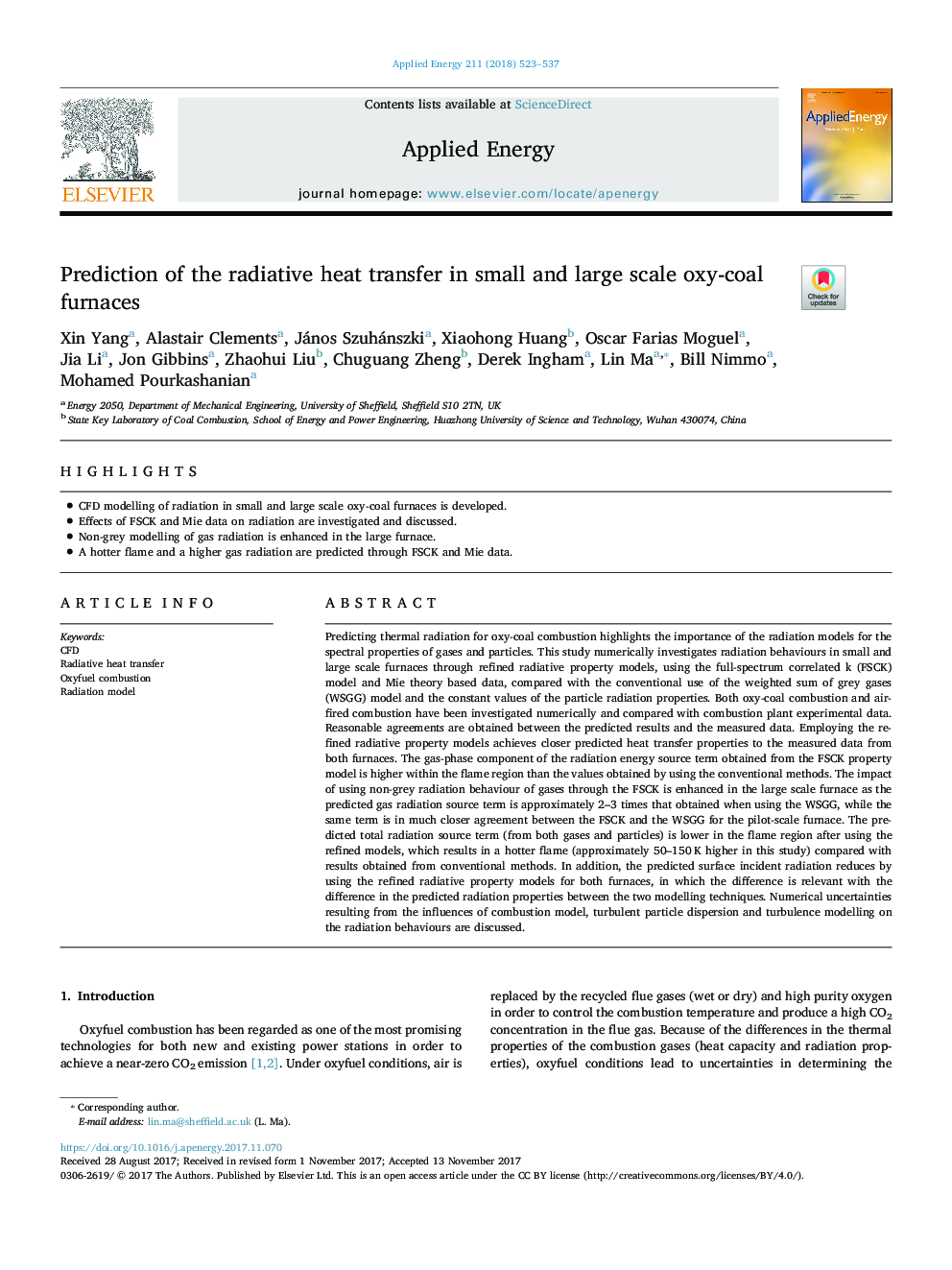| کد مقاله | کد نشریه | سال انتشار | مقاله انگلیسی | نسخه تمام متن |
|---|---|---|---|---|
| 6681269 | 1428079 | 2018 | 15 صفحه PDF | دانلود رایگان |
عنوان انگلیسی مقاله ISI
Prediction of the radiative heat transfer in small and large scale oxy-coal furnaces
ترجمه فارسی عنوان
پیش بینی انتقال حرارت تابشی در کوره های اکسیژن کوچک و بزرگ
دانلود مقاله + سفارش ترجمه
دانلود مقاله ISI انگلیسی
رایگان برای ایرانیان
کلمات کلیدی
موضوعات مرتبط
مهندسی و علوم پایه
مهندسی انرژی
مهندسی انرژی و فناوری های برق
چکیده انگلیسی
Predicting thermal radiation for oxy-coal combustion highlights the importance of the radiation models for the spectral properties of gases and particles. This study numerically investigates radiation behaviours in small and large scale furnaces through refined radiative property models, using the full-spectrum correlated k (FSCK) model and Mie theory based data, compared with the conventional use of the weighted sum of grey gases (WSGG) model and the constant values of the particle radiation properties. Both oxy-coal combustion and air-fired combustion have been investigated numerically and compared with combustion plant experimental data. Reasonable agreements are obtained between the predicted results and the measured data. Employing the refined radiative property models achieves closer predicted heat transfer properties to the measured data from both furnaces. The gas-phase component of the radiation energy source term obtained from the FSCK property model is higher within the flame region than the values obtained by using the conventional methods. The impact of using non-grey radiation behaviour of gases through the FSCK is enhanced in the large scale furnace as the predicted gas radiation source term is approximately 2-3 times that obtained when using the WSGG, while the same term is in much closer agreement between the FSCK and the WSGG for the pilot-scale furnace. The predicted total radiation source term (from both gases and particles) is lower in the flame region after using the refined models, which results in a hotter flame (approximately 50-150â¯K higher in this study) compared with results obtained from conventional methods. In addition, the predicted surface incident radiation reduces by using the refined radiative property models for both furnaces, in which the difference is relevant with the difference in the predicted radiation properties between the two modelling techniques. Numerical uncertainties resulting from the influences of combustion model, turbulent particle dispersion and turbulence modelling on the radiation behaviours are discussed.
ناشر
Database: Elsevier - ScienceDirect (ساینس دایرکت)
Journal: Applied Energy - Volume 211, 1 February 2018, Pages 523-537
Journal: Applied Energy - Volume 211, 1 February 2018, Pages 523-537
نویسندگان
Xin Yang, Alastair Clements, János Szuhánszki, Xiaohong Huang, Oscar Farias Moguel, Jia Li, Jon Gibbins, Zhaohui Liu, Chuguang Zheng, Derek Ingham, Lin Ma, Bill Nimmo, Mohamed Pourkashanian,
